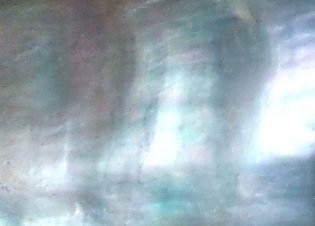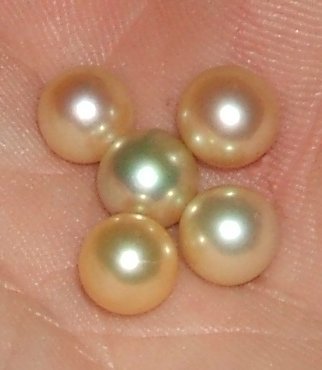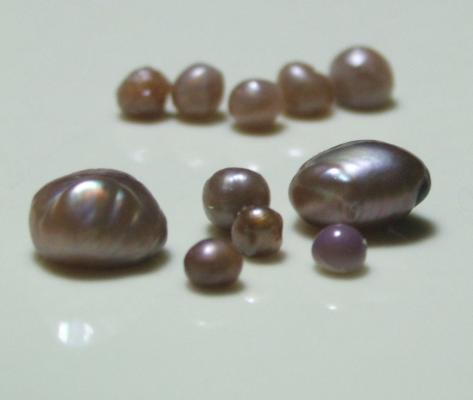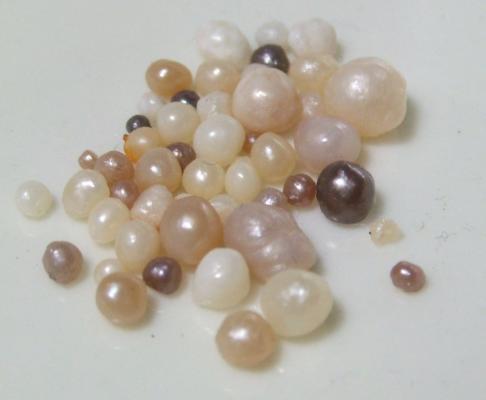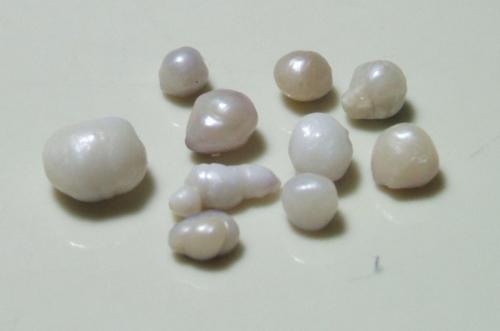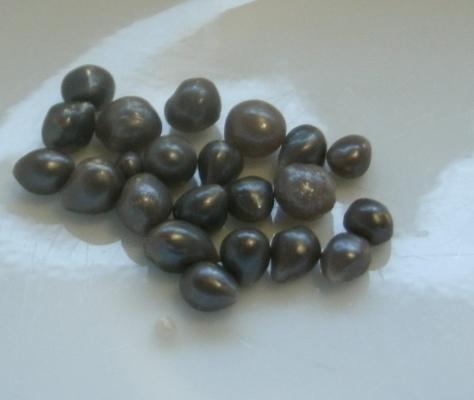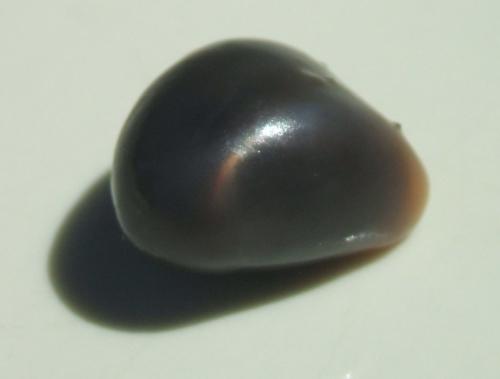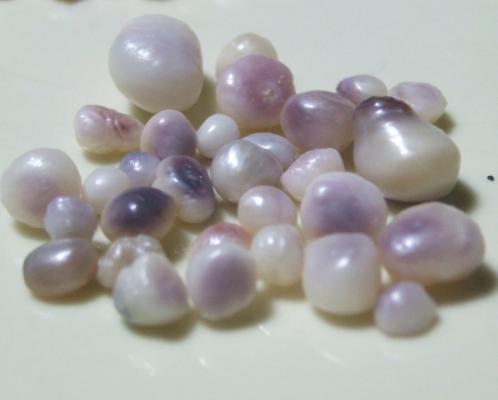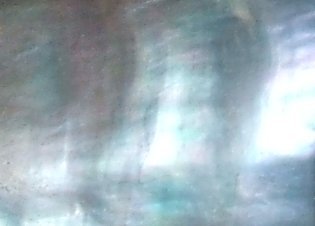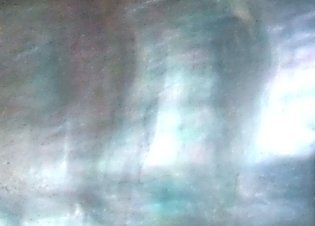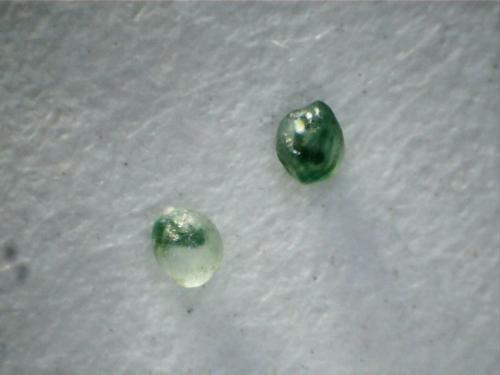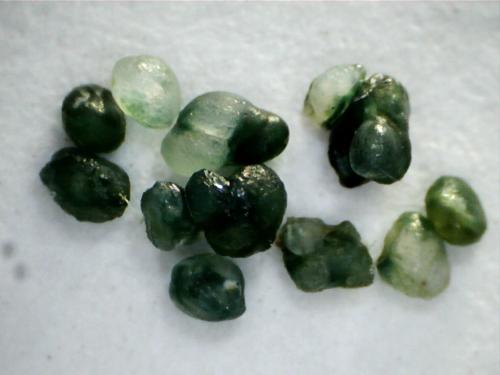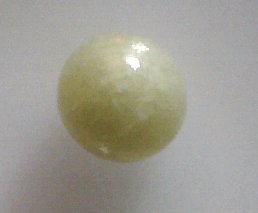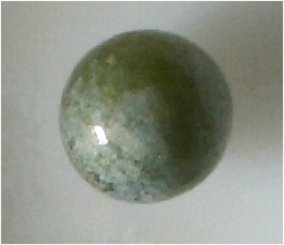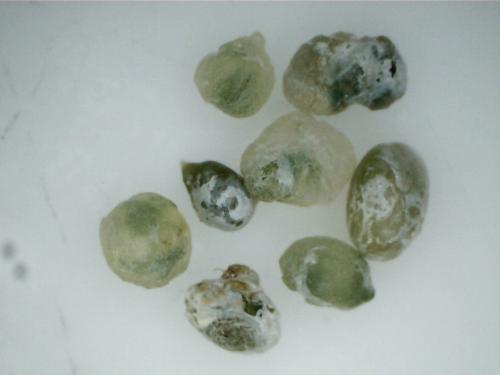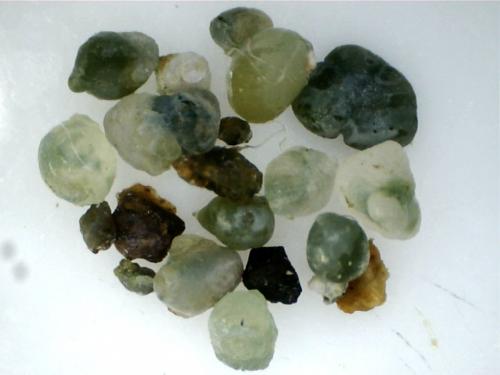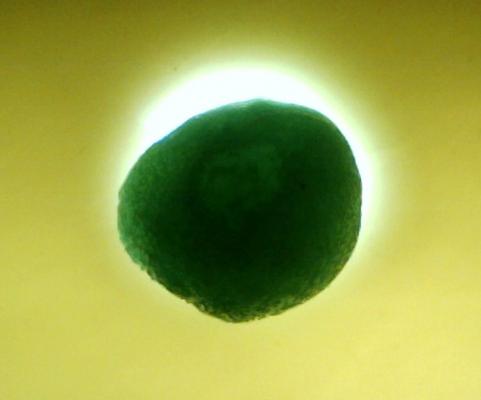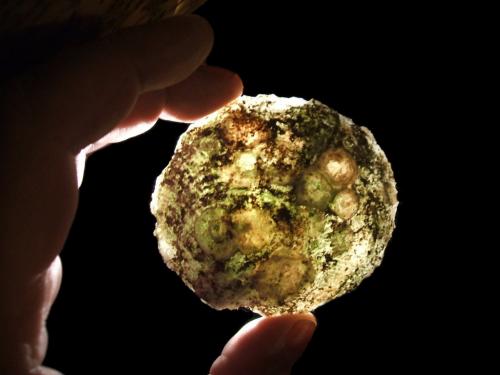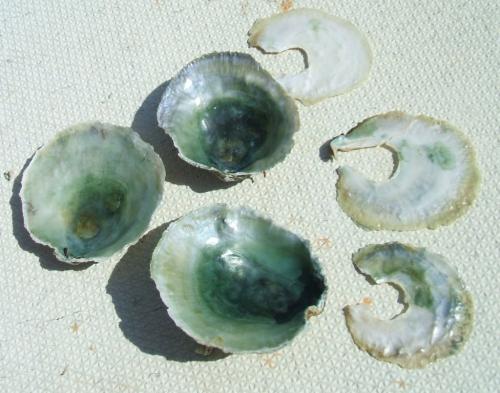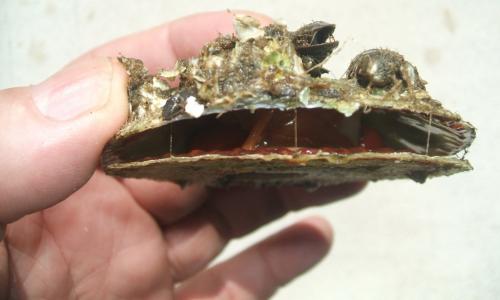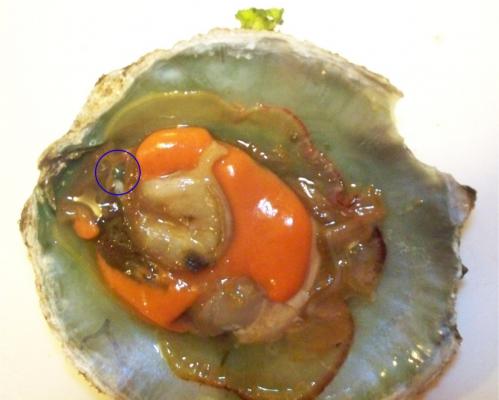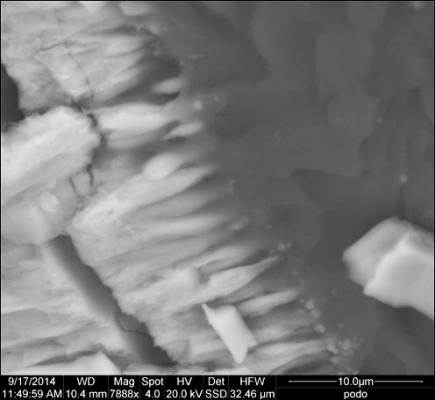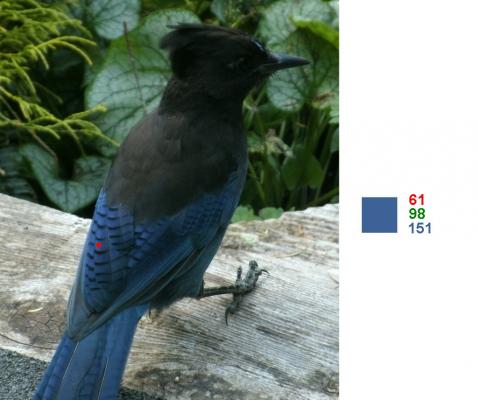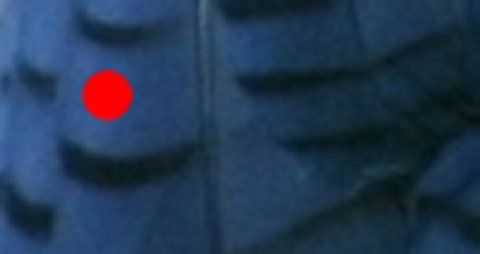-
Posts
84 -
Joined
-
Last visited
Everything posted by Lagoon Island Pearls
-
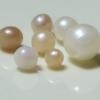
The "Whatever Theory" Identifying The World...
Lagoon Island Pearls replied to whatever theory's topic in Speculations
Again, you are dismissing valid criticisms that counter your assertions. There is no burden to prove something that does not exist. That burden lies upon you to prove it does. Confirmation bias is not proof, it's conjecture. Seeing how you've insisted I cite my facts, I'll indulge you. Conversely, I expect you to do the same from herein. Speculation does not exempt you from this burden, but demands your assertions have credible standing with known protocols. ------------------------------------------------------------------------------------------------------------------- Center for Tropical and Subtropical Aquaculture Publication No. 127 March 2002 "Look for areas on the inside of the shell where the nacre is lustrous and of the desired color. The half-pearl will have the same color as the area on the shell where it is glued. If it is placed near the colored area, which is close to the edge of the shell, it will have a dark, iridescent quality. If placed further inside, it will be white or silvery." This supports coloration in cultured pearls is artificial and may be dark, light or anywhere between. ----------------------------------------------------------------------------------------------------------------------- On iridescence, https://en.wikipedia.org/wiki/Iridescence Iridescence (also known as goniochromism) is the property of certain surfaces that appear to change colour as the angle of view or the angle of illumination changes. Examples of iridescence include soap bubbles, butterfly wings and sea shells, as well as certain minerals. It is often created by structural coloration (microstructures that interfere with light). ---------------------------------------------------------------------------------------------------------------------- TISSUE & CELL 1972 4 (4) 591-600 Published Dy Longman Group Ltd. Printed fir Great Brilain JERRY M. NEFF* ULTRASTRUCTURE OF THE OUTER EPITHELIUM OF THE MANTLE IN THE CLAM MERCENARIA MERCENARIA IN RELATION TO CALCIFICATION OF THE SHELL "Mineral distribution in the epithelium. The intercellular spaces contain a variable number of electron-dense granules 100--200 ~ in diameter (Fig. 4). Their profiles are usually round or somewhat angular and even when observed at high magnification they contain no clearly discernible substucture." "Though net deposition of calcium carbonate,as evidenced by shell growth, occurs primaily at the ventral margins of the shells, large scale alternate deposition and resorbtion of calcium carbonate takes place over the entire inner surfaces of the shells and especially dorsal to the pallial line in Mercellaria (Dugal, 1939). The inner surfaces of the shells in Mercenaria serve as an alkali reserve during periods of anaerobiosis~ and shell carbonate is dissolved to buffer the succinic acid produced anaerobically (Crenshaw and Neff, 1969). During short periods of anaerobiosis, a 100 g clam. may dissolve the inner surface of its shells at a rate of 2 mg per hour. Calcium and COe, dissolved from the shell, do not accumulate in the extrapallial fluid but rapidly pass through the outer epithelium of the mantle into the fluids and tissues of the animal (Dotterweicb and Elssuer, 1935 and Crenshaw and Neft\1969). During aerobic periods, this mineral must be replaced or the shell would eventually be dissolved away. Thus, bidirectional fluxes of calcium and CO2 through the outer epithelium must be very large." Again, proof molluskan shells change in structure seasonally. Therefore no single color nor range may be accurately described at any given time with the expectation of uniformity across the board. ---------------------------------------------------------------------------------------------------------------- CULTURING ABALONE HALF-PEARLS Pam Hutchins FGAA Wide Bay Valuation Services, Bundaberg "If the water temperature fluctuates greatly between 6 and 21 °C, then this will affect the colour of the nacre that the abalone will secrete; it will determine the layering of both conchyolin and nacre; and will modify the intensity of colour in the secreted nacre." "The paua is the species of abalone that displays the greatest range of colours, and the strongest iridescence from the nacre of any abalone." "This fact is highlighted by the strong and vibrant iridescent colours that can be observed (Fig. 6) on the nacre that lines the shells of ‘wild’ abalone ." "Detailed criteria for quantifying lustre (into categories of mirror, reflective and soft), surface (into categories of smooth, visible, and textured), and colour (into categories of green gold pink brights or subtles, green blue brights or subtles, blue green brights or subtles, blue violet brights or subtles) have been published in print and electronically (at bluepearls.com) as The Eyris Blue Pearl Grading System." "Seaweed that produce the best display of colours in abalone nacre include an appropriate mix of : • Macrocystis pyritera or giant kelp (Fig. 12A)⎯ a large brown seaweed that has big leaves and a bulky, slightly coarse texture, • Gracillaria (Fig. 12B), a fine filamentous red seaweed that has a fine texture, and • Ulva, or green seaweed" Note: to that end to contributor Tar, I concede the role of trace elements in an artificial context and only as it's applied to iridescence, in the absence of which elements are implicated and how they relate to color. --------------------------------------------------------------------------------------------------------------- Physiology of Mollusca, Volume 1 edited by Karl M. Wilbur, C. M. Yonge "Chromataphores contain yellow, orange, red, red-brown, blue-violet or black pigments. A squid, cuttlefish or octopus may have an assemblage of differently colored chromataphores." "Pelagic species also exhibit color changes, especially those which make vertical migrations and occur in surface waters. --------------------------------------------------------------------------------------------------------------- 2010-1 2010-04-21 CIBJO/GEM MATERIALS CIBJO/SECTOR 3/PEARL COMMISSION "6.3. Fading and other colour changes The colour of some natural and cultured pearls (5.51 and 5.134) may fade when exposed to natural sunlight, artificial light or strong display lights. Some natural and cultured pearls (5.51 and 5.134) that have been colour treated may fade or revert to their original colour when exposed to natural sunlight, artificial light or strong display lights. In these cases, special care advice shall include instructions that these natural or cultured pearls should not be exposed to strong natural or artificial light or to strong display lighting for an extended period of time." This presents a huge problem with analysis, because fixation is not described. Hence any colors observed may be skewed from their original state. ------------------------------------------------------------------------------------------------------------------ Chinese Science Bulletin March 2011 Vol.56 No.9: 869–876 doi: 10.1007/s11434-011-4348-8 Erosion of the prismatic layer by the organic matrix during the formation of the nacre-prism transition layer in the shell of Pinctada fucata (Bivalvia, Mollusca) "Three variants of the sequence of formation of the nacre-prism transition layer were observed in Pinctada fucata (Bivalvia, Mollusca)shells." "Changes in the interprismatic organic envelopes on either side of the nacre-prism transition zone indicated that the organic matrix of the nacre-prism transition layer becomes embedded into the organic phase of the prismatic layer." "The variation in the appearance of the transition layer during its formation may reflect different growth rates of the shells. When shells grow slowly, the transition in the manner of growth is moderate, whereas when shells grow fast the transition becomes acute. In this study, we identified three types of nacre-prism transition formation, but more types might exist." -------------------------------------------------------------------------------------------------------------------- Molecular Evolution of Mollusc Shell Proteins: Insights from Proteomic Analysis of the Edible Mussel Mytilus Benjamin Marie • Nathalie Le Roy • Isabelle Zanella-Cle´on • Michel Becchi • Fre´de´ric Marin "In a puzzling manner, despite microstructural resemblance between the nacro-prismaticshell layers of these two genera, no sequence homology has been reported so far for mollusc SMPs." "We noticed that, although homologous proteins were detected in different Mytilus shells (e.g. MUSP-1, MUSP-3 and Chitin-binding), the corresponding mRNAs only appeared in the EST of one of these species (Table 1), testifying of important qualitative differences in their respective EST dataset. Indeed, important variations in biomineralising gene expression are likely to occur between individuals according to their developmental stage (Jackson et al. 2007a), to their respective physiological condition or even depending on the moment of the day (Miyazaki et al. 2008)." "Moreover, we are aware that the EST data sets used in this study are not exhaustive, and future efforts will likely reveal additional SMPs For example, a recent proteomic analysis of the calcified skeleton of the sea urchin Paracentrotus purpuratus evidenced an unexpected diversity of matrix proteins, due to the availability of a important dataset from Spur_v2.1 draft genome (Mann et al. 2008a, b)." "Nacrein-related protein sequence has been described from the analysis of the mRNA of the mantle of the gastropod Turbo marmoratus (Miyamoto et al. 2003), but to date no CA has been directly detected from the shell nacre of this gastropod nor from a cephalopod nacre (Marie et al. 2009a)." "By establishing that several of the predicted proteins from the EST dataset are actually components of the shell, we are able to make hypotheses about their direct contribution to shell construction and the implications of their evolution among calcifying shell matrices. Without this, the EST dataset is simply a list of sequences that can be associated to putatively secreted protein sequences, for which functional assumption can be only attempted according to sequence similarity with already described proteins, and is not valuable for the description of novel proteins." -------------------------------------------------------------------------------------------------------------------- I have more than fifteen hundred published papers in my library and have read everyone of them. It's not necessary to quote each because it will needlessly mire the thread with what is already known. The OP has not cited one which even remotely supports RGB interfaces have any bearing on identification of any species, no less with exclusivity. These quotes factually support my assertion, that mineralization within a protien maxtrix is not constant among individuals of the same species. In shells and pearls, pigmentation occurs in protein. Combined with the fact prisms reflect light in different colors according to orientation thoroughly debunks the OP's assertion they can be identified in the manner suggested. -

The "Whatever Theory" Identifying The World...
Lagoon Island Pearls replied to whatever theory's topic in Speculations
Being rude and dismissive does nothing to support your case. I am not attacking you personally, I am criticing your assertions. Clearly, you do not understand the difference. Not one person has suggested this to be true. Saying so does not make it so. As to the rest of the quoted comment, I call bullshit. It does not dignify a response. You and I agree to possibilities, but the OP does not, by continuing to maintain their assertions to be true. They only thing the OP has demonstrated to me with any certainty is unconscious incompetence. By virtue of that deficit, incapable of rational discourse at any level, no less in a scientific context. I am enjoying and respect your contribution to the discussion, but greatly fear that falsehoods, hyperbole and ad hominum on the OP's behalf, needlessly derails their own topic. We've reach a point where we agree for the most part and agree to disagree (only slightly) on a single matter, There's not much more to add to what's already been contributed. It's my understanding pontificating and preaching are not allowed on this forum. For those reasons, I'll ask the administrators that this thread be locked. -

The "Whatever Theory" Identifying The World...
Lagoon Island Pearls replied to whatever theory's topic in Speculations
Beyond the wildest stretch of the imagination, I cannot see that as practical. Even then, how does one propose to address the numerous variables without a considerable margin of error? Unless that problem has been solved first, the question can only be in a hypothetical context. Likewise, it seeks a response based on confirmation bias, assuming only A is true, but not B. Do you agree? Where pigmentation is concerned, I'd skeptically agree to the possibility, but only to the point it may not be unique or constant. Then what's the point? What's to say another species within the same realm would not express the same patterns or an identical species differently in another? For example, I'm not convinced the colors of a poplar tree (Populus tremuloides) growing in muskeg in Northern Ontario would be identical to the same species growing in iron rich soil in Michigan at any given time. If it were true, it would have to be supported by chemical and spectroscopic analysis and any baseline is regionally specific only. Nonetheless, the overall complexity still casts a shadow of doubt as to doability. Where environment ranges, chromatophores or extracrystalline structures (among other artifical or natural things) are concerned, I do not agree. -

The "Whatever Theory" Identifying The World...
Lagoon Island Pearls replied to whatever theory's topic in Speculations
Speaking to limitations. What color is an octopus? What color is a chameleon? Does a fish change it's color to adapt to it's environment? How would you even begin to refine or adjust this problem, when any color may be expressed in those species? I mentioned seasonality previously. Is it true humans experience periodic variations or fluctuations in skin tone between winter shut-ins and summer tans? By the way, Stellar's Jay is not blue. It only appears blue in the same sense as the sky or a lake appears blue. These among numerous examples that clearly falsifiy this theory, yet not one example has been demonstrated supporting a single RGB color is unique to any species. Debunked is putting it lightly. -

The "Whatever Theory" Identifying The World...
Lagoon Island Pearls replied to whatever theory's topic in Speculations
Agreed for the most part, but some very important points are missed. The irritant thing, is irritating because it's not always the case. Irritation is described as the state of inflammation or painful reaction to allergy or cell damage. Mussels, clams and oysters have no brains, therefore do not experience pain as we know it. They are not sentient and sessile, hence do not have the ability to hide or relocate when attacked by predators. All they can do is close up, but sooner or later will have to open up to feed or breathe. Does this make them vulnerable to their environment? Yes indeed, but nowhere can it be suggested that color is the single limiting effect of environmental stresses. Shells break all time in storms or by logs etc., yet not every one results in pearls being formed. Most heal quite well and live long lives. As I mentioned, no single factor is implicated in all cases. To use your analogy in the quoted reply, a gall stone is the result of elevated levels of bile salts in the digestive tract, not an irritant, even though irritation may result from the concretion after the fact. The same applies to pearls, especially those of sterile myostracial origin. This type of pearl has no visible nuclei, which is why pododesmus pearls, among others appear nearly transparent. Horn pearls in abalone are caused by hepatopancreatis. Also not an irritant, but an autoimmune response to one or more blood borne ailments and/or histocompatibility antigens by predisposition. Much the same way streptocci bacteria is implicated in rheumatoid arthritis in humans. Inflammed joints remain sterile and aseptic. T-cells in the blood are fooled into thinking joint tissues themselves are bad and a reaction takes place. An antinuclear factor, if you will. A parasite drilling through the shell or tissues causes irritation. Sand lodged in the extrapallial space is also an irritant. These incidences are not uniform across the board. As mentioned earlier, some higher, some lower... even among the same class and genus. Also as mentioned and supported by your response is the relationship between donor and recipient. The donor always determines color. This is because the graft is homogeneic. In nature, especially where predators are concerned, the invasive tissues are xenogeneic and therefore not predictable. Once a mollusk is sacrificed, the mantle tissue remains viable for a short period of time thereafter. Most predators to mollusks are other mollusks, annelids, protozans and other things. In the case of mollusks or annelids, the mantle of the predator is situated in the blood stream as to keep growing, even though the critter itself died. This means a pearl of a completely different species occurred in a compatible host. Even if this thread were true, the pearl's appearance and structure cannot be attributed to the host. It's merely a surrogate, nothing more. I have the only known pearl from an octopus. One might ask, how does an animal with no shell produce a shell? The answer is xenogeneity as mentioned above, even though cephalopods are phylum mollusca. The octopus had amputated parts. Octopus eat bivalves. A piece of the mantle epithelium became lodged within the scar tissue, hence remained viable. Anyone examining the pearl might suggest it's origin may have been a cockle, a butter clam or an oyster, but a cephalopod would have never entered the equasion, especially on a double blind trial. All cultured pearls are periostracial in origin. The grafted tissue picks up the blood stream then begins to produce a protein barrier, then becoming prismatic in mineral structure, then nacreous, then calcareous... in that order. Each are different processes from one another and the components within present with different colors (among numerous other factors). Many natural pearls are myostracial in origin. Aberrations, if you will. Pearls that appear spontaneously for unknown or nonspecific reasons. Likewise, I challenge you or anyone else reading this to present evidence that a pearl can be attributed to a specific geographical location strictly based upon it's color only. Then again, even if it were true, who's to say that color will not be present elsewhere for other reasons in any species? There is not one molluscan species on this planet that presents with a single color on all these levels collectively unto itself. Most have several colors and the combinations and these patterns are not identical to each other. For even a semblence of credibility to this flawed thread, all colors must be considered, as does the cyclical seasonality of growth fronts, age, structure, quiescence, uptake, depuration and a whole gammit of other factors. Over the realm of tens of thousands of creatures in taxonomy, it's neither practical nor inculpatory. I am highly critical of even the more sophisticated gem labs on the planet for their assesments of pearl origin. Asserting their reports are largely based on subjectivity and not actual facts gleaned through differential diagnosis, pathology or tangible provenance. Pearls are very often drilled or otherwise destroyed for scientific purposes, essentially removing supporting or contradictory evidence. They also cannot provide evidence the pearls are indeed natural, not incidental to cultural processes unless beads or other nuclear inconsistencies are present. At best, pearl identification is based around educated guesses. Unless one harvests a pearl from the wild themselves and marked the location by GPS, there's absolutely no way science can definitively put that pearl back into it's original location by any means. This theory is debunked. -

The "Whatever Theory" Identifying The World...
Lagoon Island Pearls replied to whatever theory's topic in Speculations
You've made the assertion that environmental factors, namely trace elements affect the color of a pearl. As such, the burden of proof is now upon you to prove this is true. Citation please. I will add to this question, by submitting these images. Every pearl in all the images are from the same location and the same species, California mussels (Mytilus californianus). The first image is the nacreous lining of a shell (See edit note for correction). If your claim were true, which color is influenced by an environmental effect and which are buried in genetics? You've also mentioned standardization. How is this even remotely practical in these pearls, yet suitable for matching sets? The OP claims his method positively identifies pearls by species, but has failed to prove it. The first flaw being, a shell of the same species is required for comparison. This defeats the purpose, because for that reason the species is already known. Hence, confirmation bias is being employed, not objectivity. The second being, what part of the shell lining image directly relates to colors of other pearls posted here? Why are the grafted round pearls gold, not peacock as the image suggests. Why does one have green overtones and why does the other have red? At this time, I'll submit to you, that pigmented color is dictated by mucopolysaccharides and glycoproteins in the donor, not the recipent nor the environment. Overtones are dictated by the orientation of the aragonitie tablets within the extracrystalline structure. There is no single factor that gives rise to the onset of pearls in all instances. There are multiple etiological factors. Hormones, parasites. shell damage, autoimmunity, blood disorders to name a few. Environmental factors rank low in this order. I maintain pearls can be any color at any time for any reason, hence standardization is impossible. I will take it even further. You mentioned "abrasive". Please tell me, what part of a pearl grafting operation is abrasive? Would it be reasonable to expect irritation or abrasion might exaserbate the graft, leading to infection, rejection or mortality? Do you understand the difference between periostracial or myostracial onset of pearls? Do you understand pearls may be either septic or aseptic in origin? Do you understand an aseptic pearl can burst from the sac and become septic? Do you understand a septic pearl can become aseptic once mineralized sufficently? If one goes black and the other turns white, where does the standard lay? In the absence of external factors, do you understand pearls may be formed spontaneously by blood acid/base imbalance? Do you understand how blood borne protozans affect autoimmunity and how is this "abrasive"? Do you understand protein, calcite and aragonite are different things and may be present in different amounts for a multitude of reasons? Though I'm quite certain you are motivated to objectivity, I'm pained to suggest you're embracing myths in this case. Again, being the devil's advocate... why are the flat spots on the pearls purple? Have you noticed the purple pearls are the same as the white pearls, except inverted? Why is that shade of white unique to the white on the pearls in the other images? After all, they are from the same species in the same location. Epithelial cells are present on the outer surface of the mantle in a mollusk, There are epithelial cells on the inner surface as well, but do not mineralize. There are exceptions to this, where two shells meet, namely at the edges. Purple is observed in many species. Likewise, flat spots on pearls are formed because of the close proximity of the shells, hence mineralization takes place on both sides of the epithelium and the structure is extremely thin (scarecly a few microns) hence the orientation of aragonite tablets are more predictable and reflect light at that end of the spectrum only. Again, how can this possibly be unique to a single species of mollusk as to make it readily identifiable? I submit, it cannot. There are numerous myths about pearls. Perpetuating them does not make them true. As an example, pearl culture does not utilize grains of sand, ever. It utilizes graft tissue from a select donor, namely for the color of it's shell. Only one in ten is a suitable candidate, because shells are not identical. In natural pearls, sand is a factor, but the incidences are low and not uniform across species. In pectinae it's high, in heterodonta it's high in some (Panope generosa), virtually non-existent in others (Venerupus philipinarium). Edited Note: The "first image" is not at the top. I tried to upload it seperately in a follow up post, but they appeared in the middle of the post. (having incorrectly using the wrong reply button) Likewise, the pododesmus images also were lumped into the same thread. Rather that repost, please understand there are two species represented. (Mussels top half, rock oysters lower half) On the topic of environmental factors, I now submit images of natural pearls from Pododesmus macrochisma. These samples where taken from the same location as the mussels. It was a long held myth that the green color in the shells of Pododesmus m. was the result of algae infiltrating the extracrystalline structure of the shells. However, since I discovered pearls in the species, this cannot be true. After all, pearls are biotic, metabolic structures several times removed from the environment, especially where algae growth is concerned, otherwise would the tissues not be green too? You'll note some of the pearls are almost transparent. On some of those pearls, there are expressions of protein presenting a bright green. You will also note in some, the pearls are occluded in calcite and present as white, even though it's apparent there is green underneath it. These are seasonal factors, later in the year (namely winter) the mollusk will uptake the calcite when the salinity is reduced. Like bones, the building of pearls or shells is not a one way street. It's balance of give and take even though it's generally more give. However, in my current work, I'm seeing trends in areas where acidification is causing shells to become weak and thin... but that's another topic for another discussion. For any degree of accuracy, measurements would have to be taken seasonally and applied as a subsection to each species. Again wholly impractical and needlessly burdensome when attempting to create a baseline. You'll also note, that although green predominates the proteinaceous component of these pearls, brown occurs in about 5% of the cases. Likewise multiple colors. It can also be noted, the structure of these pearls are foliated calcite, not nacreous, even though strands of fibrous aragonite are visible in the SSEM views. To summarize. I am not suggesting environmental factors are not present. I am only saying it's negligible. Hence is cannot be applied to any standard of identification by color alone. I know several pearl farmers around the world. Some suggest their pearls have a tinge of something unique from others, but admit it's likely due to variations in the genetics of their brood stock, not the environment itself. -

The "Whatever Theory" Identifying The World...
Lagoon Island Pearls replied to whatever theory's topic in Speculations
I'll indulge the OP's procedure and contribute these images. The selected area is R-61 G-98 B-151. Testing this proceedure, I have four questions to ask the OP. 1- Is the Jay blue? 2- Is R-61 G-98 B-151 unique to Jays only? 3- Is this Jay always this exact color in outdoor lighting at all times of the day? 4- If I submitted the second image only, would it positively identify the subject as a Stellar's Jay? -

The "Whatever Theory" Identifying The World...
Lagoon Island Pearls replied to whatever theory's topic in Speculations
Therein lies the rub. The OP erroneously claims this to be a doable method for the identification of pearls as to species. Molluskan valves (including pearls) contain aragonite tablets and calcite crystals embedded in a protein matrix. In a single specimen, no coloration is unique as seasonal variations occur. At the level of the periostracum, pigmentation may vary from nearly transparent early in the growth cycle to nearly opaque toward the end. In the same specimen, pearls of different colors are observed. Being intertidal in nature, these cycles are approximately 28 days in duration. Aragonite is thermodynamically unstable at standard temperature and pressure, tending to alter to mineral calcite. Marked seasonal variations are also observed. Aragonite may present as fibrous or columnar. Aragonite's crystal lattice differs from that of calcite, resulting in a different crystal shape, resulting an orthorhombic system with random acicular crystals. Repeated twinning results in pseudo-hexagonal forms. Mineral deposition in molluskan structures are strongly biologically controlled, hence some crystal forms are distinctively different from each other. In some mollusks, the entire shell is aragonite, while in others aragonite forms only discrete parts of a bimineralic structure. These structures may present in various combinations, whether prismatic, nacreous, foliated, columnar or calcitic. At best, pearl identification by species remains highly subjective. For example, the only known chemical difference between saltwater and freshwater pearls is manganese content, but even then does not imply species. In pathology, the differential diagnosis is employed to weigh probability. X-radiography and spectrometry may determine natural or aquacultural origins or structure, but in no way identifies species with one hundred percent certainty. -

The "Whatever Theory" Identifying The World...
Lagoon Island Pearls replied to whatever theory's topic in Speculations
I have been a contributor at the forum listed in the quote since 2009. The forum is an informal discussion group administrated by a retail group. While some scientific dissusion occurs on a range of topics, it's largely based around fashion, marketing and identification concerns. There is no collaboration or endorsement. In fact, the OP injected oneself into an important thread: http://www.pearl-guide.com/forum/showthread.php?t=2032 claiming to be in possession of rare nautilus pearls which were being prepared for market. Red flags of suspicion quickly arose and examination of the posted photographs clearly revealed pearls from endangered (CITES) Tridacna gigas aka Giant clams. Subsequently, the OP claimed the same gibberish being peddled in this thread, insomuch as suggesting "a child can do it". Several attempts were made to reason with the individual, but each time met with hyperbole, ad hominum or nonsensical assertions. The administrators removed the entire portion and admonished them to not attempt to solicit sales or derail threads again. The OP re-opened a new thread in the Natural Pearls section, but failed to provide supporting documentation at any level, no less as applied to natural pearl identification. Hence the thread was moved to "Other", much like this thread. Agreed. Whatever this is purported to be, it lacks terms of reference, methodology, controls or targeted initatives. Genetic Color Code (GCC)? That is so ludicrous as to be amusing. Rather than being a wet blanket, I'll contribute to this thread in a meaningful yet informal way. Likewise raise or respond to questions and/or report ongoing collaborative studies in the appropriate sections of this forum. No single color is exclusive to the extracrystalline structure in any species of mollusk shell or pearl. Natural pearls can be any color for any reason. Multiple pearls of disimilar color may be present in a single specimen. However, it is reasonable to suggest some colors are predominantly expressed in known species. A year or so ago, I started a thread: http://www.pearl-guide.com/forum/showthread.php?t=8308. By no means a scientific method, my effort was to initiate a little hands on fun, that an average person might learn better judgement when identifying pearl origins. Unlike the OP's confirmation bias selecting a single pixel, my method employed the image on the whole. Mosaics were subjectively constructed as to remove background, shadows etc. From these images, a color palette is generated. Side by side, these palettes may be compared. In a prepared quiz, the greater number of particpants were largely accurate in their guesses. Color matching with an RGB graphical interface is little more than paint store technology and it's limitations have been known for decades. Dave


